- SIAM
- Society of Indian Automobile Manufacturers
- Hero MotoCorp
- Maruti Suzuki India
- Honda Motorcycle & Scooter India
SIAM’s 19th Styling & Design Conclave Sees Discussion On Innovation, AI & Sustainability
- By Mohnish Bose
- March 29, 2025
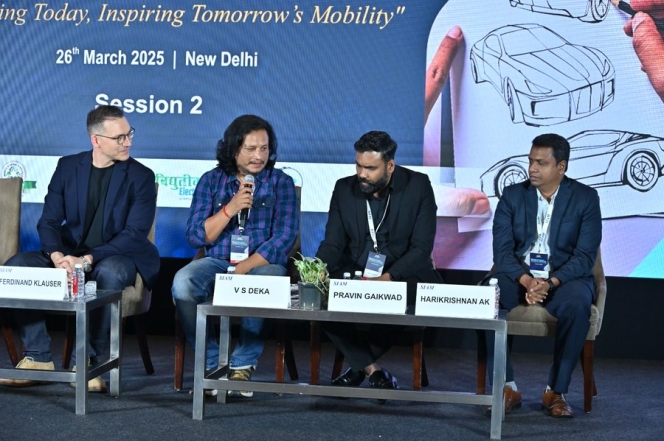
Innovation and sustainability in design took centerstage at the 19th Styling & Design Conclave 2025 organised by the Society of Indian Automobile Manufacturers (SIAM). The event saw participation from designers and professionals from organisation such as Hero MotoCorp, Maruti Suzuki India, Honda Motorcycle & Scooter India, Stratasys and Autodesk among others.
G Sathiyaseelan, Chairman, SIAM Styling and Design Group and Vice-President, Ashok Leyland, shared his views on empathetic, inspirational and innovative approach towards technology and design,
Anuj Prasad, CEO and Founder, Desmania, expressed confidence in the bright future for automotive designers.
The event saw speakers acknowledging that automotive styling has become an old word, while design and sustainability are the modern buzzwords that indicate the direction in which the automotive sector must head.
“The level of design happening in India holds tremendous potential. We are at the threshold of a new era in design and innovation. Today, international organisations are looking to India for designs that cater to both local and global markets. Automotive design will help build the nation in a responsible manner,” said Prasad.
Prashant Banerjee, Executive Director, SIAM stated that “Indian automotive designs today are as good as Italian designs.”
Samarth Gupta, Senior Technical Specialist & Mobility Lead APAC, Autodesk, said, “Everyone wants to own a vehicle because it is an expression of independence. The urban population landscape is changing due to climate change. New developments in geopolitics and the evolution of consumers’ trends and preferences are impacting the mobility landscape. We will need to evolve our auto design thinking amidst disruptions.”
Teofilo Plaza Garcia, Industrial Studio Head, Hero MotoCorp, said “Motorsports-based designs can be used for road-based vehicles, as indicated through Hero XPulse 210. These vehicles will no longer be as expensive as before.”
Rahul Pandita, Regional Head, Stratasys, stated that 3D block printing is a useful technique that has helped companies like McLaren bring racing designs to life quickly. “As design processes such as 3D block printing decrease the time taken, companies can quickly decipher whether a design is feasible or not,” said Pandita.
Dinesh Raman, Director, Transportation Design, KISKA Shanghai, opined that “As the years go by, greater use of AI will be made for design, thereby freeing up time for creative pursuits by automotive designers.”
VS Deka, Group Manager, Royal Enfield, said, “AI innovation is coming into our lives and we need to adopt the evolving technology. AI can be customised through training and then be scaled up as per requirements.”
Ferdinand Klauser, Global Partner & MD, Asia, KISKA Shanghai said, “India has a lot of potential in bringing about the transformation in mobility designing landscape.”
He also mentioned that though the future is unpredictable, it is possible to plan for it by understanding that consumer needs are transforming faster than the market.
Professor Kaustuv Sengupta of NIFT Chennai, stated, “Colour represents around 20 percent of the design language. Every 300 miles in our country, you see a new colour context. Human beings see a small spectrum of colours. Colours affect us psychologically. We see what we want to see.”
Rajesh Gogu, Vice-President (Design), Maruti Suzuki India, revealed that the company decided to create a completely new design for the fourth generation of the Dzire. The design became a success despite a 55 percent market share for SUVs.
“The trends on the road are changing, as demand for sedans have reduced while that of SUVs have grown. Designing can reinvent declining segments or products to make them popular again. Innovation is not just about technology, it is also about shape, form, aerodynamics, performance and more. We can design our vehicles that can reduce the carbon footprint offering better fuel efficiency and value to customers,” averred Gogu.
While describing the role of AI in automotive designing, Harikrishnan AK, Delivery Manager, TCS Design, said, “AI image generators can be used for inspiration, exploration and for happy accidents but there are challenges of confidentiality and originality. We need to harness the full potential of AI by customisation and fine-tuning.”
Speaking about designing in the commercial vehicle segment, Pravin Gaikwad, Head of CV Design, Tata Motors, said, “We have adopted multi-powertrain strategy. It is possible for the form to get you the trust of the customer. Form is actually helping us to define many ideas. We are leveraging tech intelligence like telematics to design something very unique.”
He shared an insight on how Tata Motors was using space intelligence as a new design direction for making Tata Prima trucks and a new space-saving concept called Tata YU.
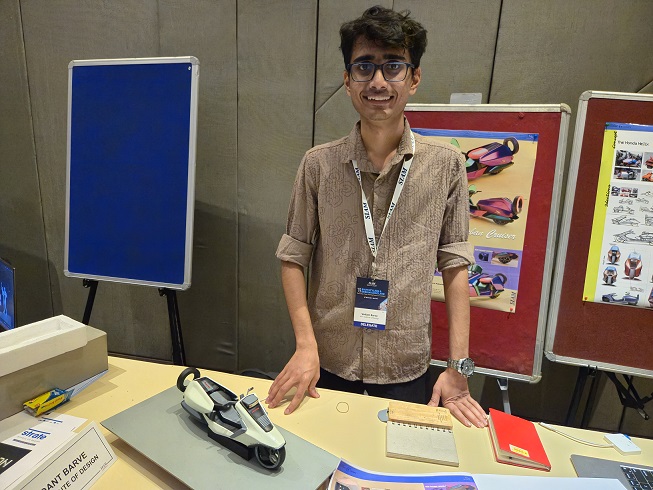
The SIAM Styling and Design Conclave also presented automotive design students of MIT (Maharashtra Institute of Technology), ADYPU (Ajeenkya DY Patil University) and NID (National Institute of Design) an opportunity to present their design prototypes. Vedant Barve, a student at MIT, won the first prize for an electric cruiser scooter concept.
“When we began, India had only two design schools. Today, there are over 1,500 design schools producing a strong talent pool for automotive design. We need to be transformative and move toward defining automotive design that is human-centric and sustainable,” added Prasad of Desmania.
“To make India into a global design hub, change that helps India use aspects of its culture while competing at a global level is needed in the academic curriculum,” concluded Sumer Singh, Associate Professor, IIT Delhi.
MapmyIndia And Zoho Announce Integration For CRM Users
- By MT Bureau
- November 26, 2025
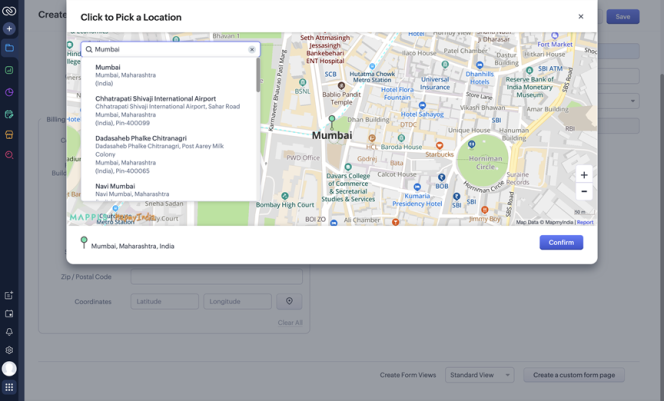
MapmyIndia Mappls, a digital mapping and geospatial technology company, and Zoho, a technology company, have announced a collaboration to integrate two MapmyIndia features directly within Zoho CRM. The features being integrated are Address Capture and Nearby Lead Finder.
The integration allows Zoho CRM users to: capture verified addresses, visualise customer locations, discover potential leads in nearby areas and optimise sales routes. These functions are powered by MapmyIndia’s mapping platform.
Rakesh Verma, Co-Founder, Managing Director & Group Chairman, MapmyIndia Mappls, said, “This partnership between MapmyIndia and Zoho is a true blue Swadeshi celebration – two Indian innovators and leaders in their respective fields - coming together to deliver cutting-edge, homegrown technology that is world-class. MapmyIndia Mappls Address Capture and Nearby Lead Finder capabilities will help Zoho CRM users across India to work smarter and sell better, while keeping all data and innovation safe within India. I am confident that this partnership will boost collaborations amongst Indian tech companies creating a sympathetic ecosystem towards the realisation of an Atmanirbhar, Viksit Bharat.”
Mani Vembu, CEO, Zoho, said, "At Zoho, we believe that true technological progress begins with self-reliance. Building deep-tech R&D from India has always been one of our foundational pursuits, driven by the immense talent and creativity that thrive in the country. Our partnership with MapmyIndia embodies this vision, uniting homegrown expertise in business software and digital mapping to deliver solutions that are powerful, privacy-focused and proudly indigenous. This integration empowers Indian businesses by combining business intelligence with spatial intelligence, giving field teams the location-aware insights they need to better serve their customers."
Toyota Kirloskar Motor Opens Experiential Museum In Bengaluru
- By MT Bureau
- November 24, 2025

Toyota Kirloskar Motor (TKM) has unveiled the Toyota Experiential Museum (TEM) in Bengaluru, which it said is a new cultural and lifestyle hub for the company. The space combines Indian philosophy with Japanese culture and technology.
Located on the ground floor of the Phoenix Mall of Asia, TEM is spread across 8,200 sq ft and offers a five-senses experience, blending Japanese minimalism with Indian warmth through visuals, sounds, scents, textures and flavours.
Tadashi Asazuma, Deputy Managing Director, Toyota Kirloskar Motor, said, “At Toyota, our vision of creating ‘Happier Paths Together’ goes beyond mobility – it is about inspiring experiences that connect people, cultures, and emotions. With TEM, we hope to offer a truly unique experience that embodies this spirit.
In India, we found inspiration in the practice of Sadhana – the mindful pursuit of inner balance and fulfilment. TEM is where the Japanese culture and values of precision, serenity, and respect for nature beautifully align with the spirit of Sadhana, making TEM a meaningful blend of both. Designed to engage the senses and spark reflection, it brings together art, technology, and craftsmanship to inspire mindfulness, especially amongst the youth.”
The museum features minimalist interiors and distinct aesthetics designed to spark curiosity, inviting guests to explore at their own pace. The journey begins with a mirrored and rhythmic experience of the changing seasons common to Japan and India, unfolding through infinite projections of light, colour and motion. It then rises into a celebration of shared passion, featuring an audio-visual collaboration with DRUM TAO. A display includes a water curtain encircling a car draped in satin.
A design cafe offers a range of merchandise blending heritage with contemporary lifestyle, celebrating simplicity and craftsmanship.
The TEM cafe features a curated menu that blends the Japanese tradition of matcha with Indian flavours. Highlights include the India-inspired mango infusion.
- Maruti Suzuki India
- Maruti Suzuki Innovation Fund
- Ravity Software Solutions
- Sociograph Solutions
- Amlgo Labs
- Hisashi Takeuchi
- Vikas Rungta
Maruti Suzuki India Invests INR 20 Million In Ravity Software Solutions
- By MT Bureau
- November 21, 2025
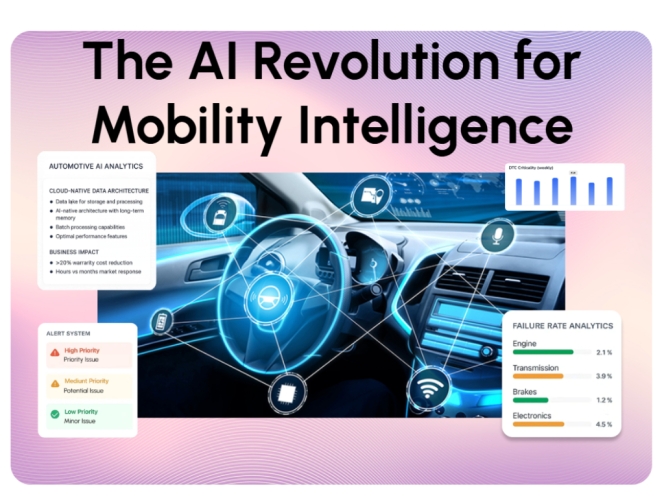
Maruti Suzuki India (Maruti Suzuki) has announced an investment of nearly INR 20 million to pick up 7.84 percent stake in Bengaluru-based mobility insights start-up Ravity Software Solutions. The start-up claimed to be a global platform for AI-driven connected mobility intelligence, which transforms vehicle data into business value.
This marks the automaker’s third such move through ‘Maruti Suzuki Innovation Fund’, which makes strategic investments in innovative and high-potential start-ups that can support Maruti Suzuki India’s operations.
The company made its first investment of INR 20 million in Sociograph Solutions in June 2022, followed by the same amount in Amlgo Labs in March 2024.
Hisashi Takeuchi, Managing Director & CEO, Maruti Suzuki India, said, “Aligning to our core value of keeping customer at the core of our business, we are focused on enhancing vehicle ownership experience. In the age of open innovation, we strive to co-create business solutions with specialized entities operating in the particular field. Startups are ideal partners as they bring agility, fresh thinking, and cutting-edge solutions, to support our goal of ensuring customer delight. Our investment in Ravity Software Solutions will enable us to elevate customer experience through data-driven insights. We have been associating with startups since 2019 under our Maruti Suzuki Innovation programs. Through this initiative, we are investing in a culture of innovation, building strategic partnerships, and unlocking new opportunities, in line with Government’s ‘Startup India’ initiative to promote entrepreneurship in the country.”
Vikas Rungta, Founder, Ravity Software Solutions, said, “It is an honour to be associated with an industry leader like Maruti Suzuki, whose name is synonymous with bringing personal mobility to millions in India as well as across the globe. An automobile major like Maruti Suzuki partnering with a startup speaks volumes about its forward-thinking mindset, humility, and openness to learn and collaborate to explore new ideas. With our excellence and expertise in AI, analytics and mobility, we are committed to upholding the trust Maruti Suzuki has placed in us. We believe that the high complementarity of our strengths: Maruti Suzuki’s scale of business and our agility and entrepreneurship, will further enhance customer experience and delight.”
LG Display Wins Two CES 2026 Innovation Awards For Automotive Display Technology
- By MT Bureau
- November 21, 2025
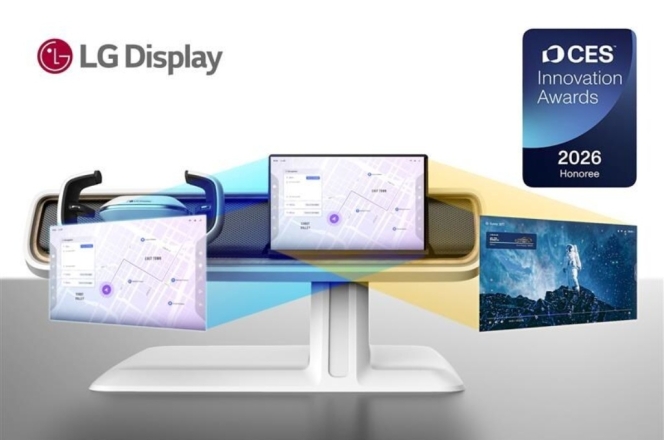
LG Display has secured two CES 2026 Innovation Awards from the Consumer Technology Association (CTA) for two automotive display innovations: Dual View OLED and Under Display Camera-infrared (UDC-IR) OLED.
Both products were honoured in the In-Vehicle Entertainment category for delivering space efficiency, superior picture quality and high standards of safety.
The Dual View OLED solution allows a single automotive display to show different content based on the viewing position. For example, the driver can view navigation while the front passenger streams content. Optimised pixel structure ensures the driver’s touch operation does not interfere with the passenger’s entertainment. The product utilises a Tandem OLED device structure for picture quality and operates reliably in environments ranging from -40deg C to 85deg C.
The UDC-IR OLED jointly developed with LG Innotek, is claimed to world’s first full-screen automotive display to conceal an in-screen driver-monitoring camera. LG Display developed advanced algorithms that make the camera hole invisible from the driver’s viewpoint. The camera integrates LG Innotek’s high-resolution IR camera and image-enhancement software to ensure accurate driver monitoring, which is becoming mandatory due to global safety regulations.
LG Display will showcase these solutions at a dedicated booth at CES 2026. The company has consistently won CES Innovation Awards, previously honoured for its Thin Actuator Sound Solution (CES 2023) and its 57-inch Pillar-to-Pillar LCD (CES 2024).






Comments (0)
ADD COMMENT